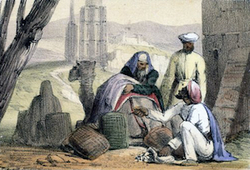Profit Mirage
Algebra
Level
2
 A dealer bought an article for $7, sold it for $8, bought it
back for $9, and sold it for $10. How much profit did he
make from doing all of these trades?
A dealer bought an article for $7, sold it for $8, bought it
back for $9, and sold it for $10. How much profit did he
make from doing all of these trades?
$3
$2
$1
$5
This section requires Javascript.
You are seeing this because something didn't load right. We suggest you, (a) try
refreshing the page, (b) enabling javascript if it is disabled on your browser and,
finally, (c)
loading the
non-javascript version of this page
. We're sorry about the hassle.
We can write this out as − 7 + 8 − 9 + 1 0 = ( − 7 + 8 ) + ( − 9 + 1 0 ) = 1 + 1 = 2 . Add the $ unit in.